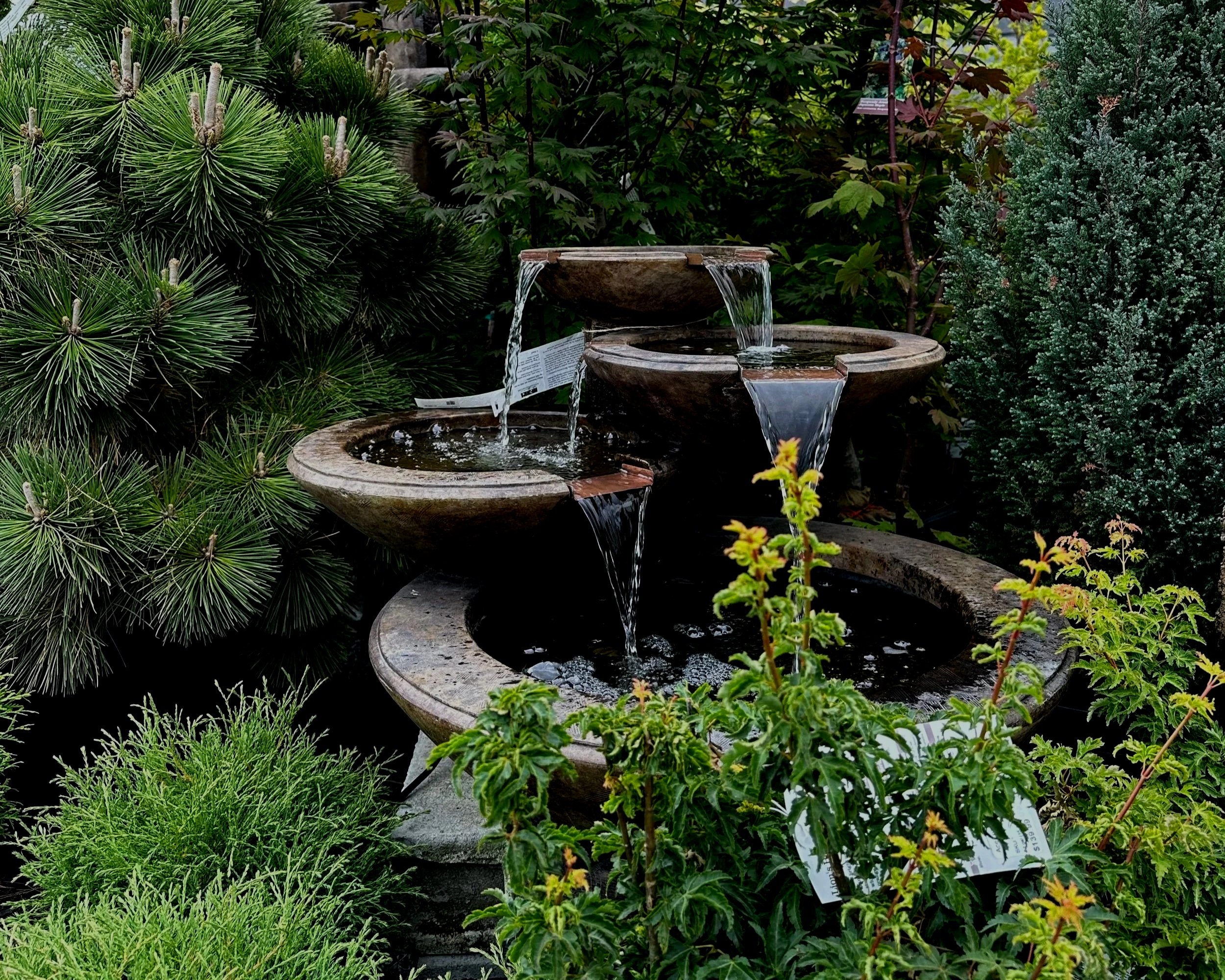Judging from the attendance for our fall container class last week (over 90) it is encouraging to know that many northwest gardeners are just saying “NO” to looking at boring pots of dirt all winter. Instead they are filling them with hardy and interesting plants that will look fabulous all winter long. Even my wife has jumped on the band wagon, dumped out her pots of petunias and geraniums and has replaced them with pansies, Heucheras, Euphorbias and sedges.
Planting winter containers is a bit different than summer containers. It requires a paradigm shift. Instead of thinking of flowers as our source of color, we need to shift to focusing on the colors and textures of foliage. We can create visually interesting arrangements simply by combining different textures of leaves. Grasses provide fine foliage that contrasts well with coarser textured plants and their vertical growth habit creates a focal point in the container. Many of our hardy groundcovers, such as vinca and wire vine, are evergreen in our winters and will trail quite nicely over the edge of a pot. Coniferous evergreens provide colors from steel blue to bright yellow to rusty orange. Plants such as contorted filberts have wild and twisted branches that are fascinating in the winter when the leaves have fallen off.
Whether planting for summer or winter, effective containers need spikey stuff for accent, fluffy stuff for filler, and spilly stuff for balance. Here are some suggestions for those categories:
Focal points - Ornamental grasses that stay evergreen such as sedges, pheasant grass, feather grass or rushes. Upright evergreens like Sky Pencil Japanese Holly, Irish juniper or Lemon Cypress. For larger pots try a palm tree, Fatsia or some clumping bamboo.
Filler plants - I prefer hardy evergreen perennials and broadleaf evergreen shrubs such as Bergenia, Euphorbia, Heuchera, Leucothoe, Wintergreen, Skimmia, Sarcococca or ferns. Short grasses like black Mondo or yellow Japanese Sweet flag make good fillers too.
Trailing plants - Hardy evergreen groundcovers work well for winter planters. Some of the nonaggressive ornamental ivies, trailing Euonymus, wire vine or creeping Jenny are all solid performers.
One of the beautiful things about winter containers is that we don’t have to worry about sun or shade (there is no sun in the winter) so we can combine sun loving and shade loving plants into the same container and they will be just fine. In the spring when we dissemble the arrangement we simply put the plants into the appropriate area of our garden. Another little trick is to take twigs of contorted willow or red twig dogwood (without roots) and just shove them into the soil as accents. Often by spring they will have rooted and will be ready for transplanting somewhere else. Of course, pieces of art or garden ornamentation make for nice accents too.
As for maintenance over the winter, start out in the fall with some soluble feed like Sea Grow (it’s like Miracle Gro only better) once a week. When it starts to get cold, dilute it to half strength and apply it every other week. This will keep your plants looking bright and shiny.
Even if you don’t want to go to the trouble of planting your containers for winter, at least fill them with some bulbs and fresh soil (don’t forget the bone meal). Move them behind the garage (but not under the eaves or they won’t get watered) and when they start to leaf out in January move them back to center stage. It doesn’t get any easier than that.


